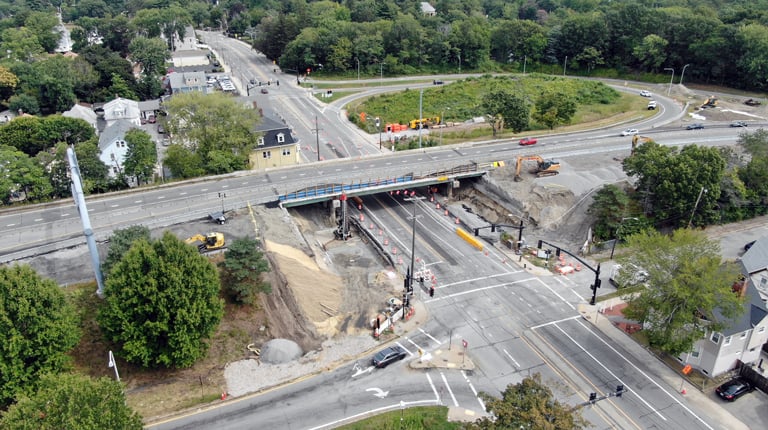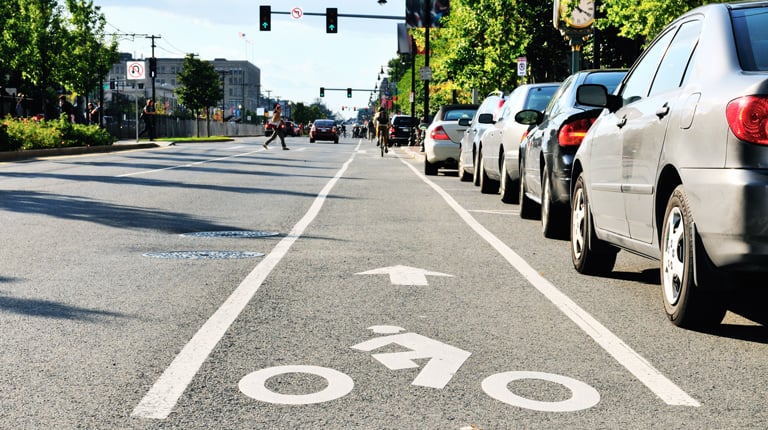On alternative delivery and design-build projects, virtual design and construction (VDC) offers a host of benefits. Using advanced digital modeling for real-time visualization, VDC facilitates VHB’s collaboration with contractors and proactively confirms that our designs are constructable. This pays off in schedule efficiencies and reduced risk for our clients. See the benefits of VDC on a few of our recent projects:
I-89 Exit 17 Interchange Reconstruction | Colchester, VT
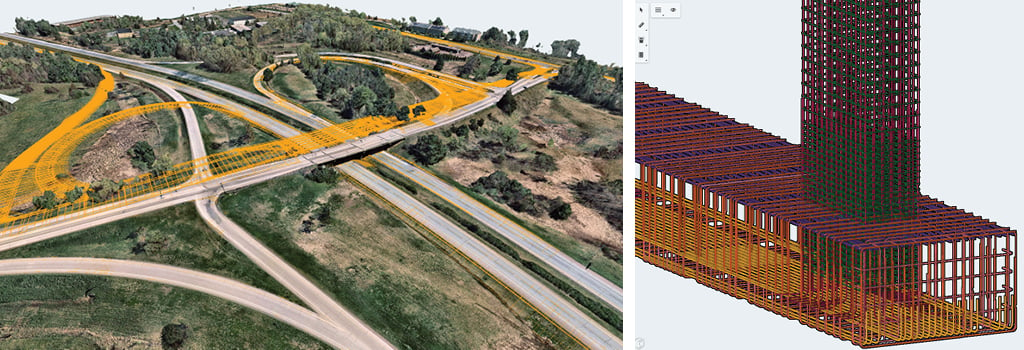
As part of a pilot initiative for the Vermont Agency of Transportation (VTrans), VHB developed a fully three-dimensional model of this project using Bentley OpenRoads Designer, OpenBridge Modeler, and ProStructures. Elements modeled include a replacement bridge over the interstate, exit ramp reconfiguration, lane widening, new traffic signals, bike/ped improvements, new lighting, and new stormwater treatment features. As the project designer, VHB used the model to refine bridge detailing and solve for design conflicts, for quality assurance, and for design plan development.
VHB, VTrans, and the construction contractor have collaborated during construction to use the model for nearly all of the earthworks and on select bridge components. For example, the construction contractor used the model to review and understand how reinforcing steel is intended to be configured and tied throughout the pier, and VTrans field staff used the model to confirm reinforcing steel is in the correct location, meets tolerances, and achieves the design intent. As construction of the project nears completion, it has been clear that use of the model has helped to create a well-thought-out project design and has contributed to efficiencies throughout construction.
Crystal City Metrorail Station East Entrance | Arlington, VA
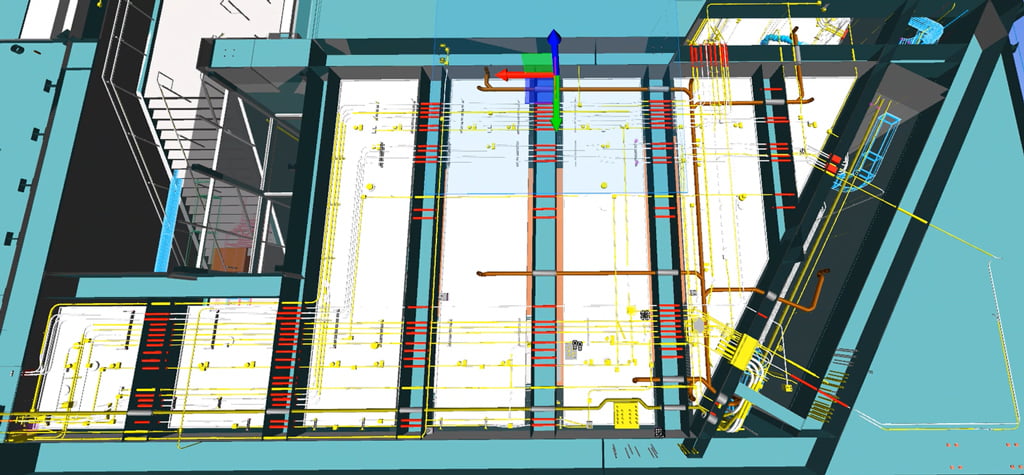
As design and program management lead of this P3 design-build project for the Washington Metropolitan Area Transit Authority (WMATA) and Arlington County, VHB and our design team subconsultants are using 3D building information modeling (BIM) in partnership with contractor Clark Construction Group, LLC. VHB and our subconsultants created Autodesk Revit models for structures, architecture, and mechanical, electrical, and plumbing (MEP), while creating Civil3D models for survey, civil, grading, and utilities. The models are all being hosted on Autodesk Construction Cloud (ACC), which allows for seamless collaboration between VHB and our subconsultants, as well as with the construction contractors, rather than traditional data swapping. As design and program managers, VHB has found Revit and Civil3D to be invaluable tools for fostering cohesion across disciplines—providing all teams with shared access to project files, enhancing communication, and enabling us to coordinate more efficiently before submitting design packages to the contractor.
The project is under construction, with Clark currently building the second of four total design packages. Going forward, the team plans to integrate our Autodesk models with Autodesk Navisworks to even more effectively identify clash detection challenges, streamline communication between disciplines, and make our design-build team more efficient overall.
Bridge Group 04_R Design-Build | Providence, RI
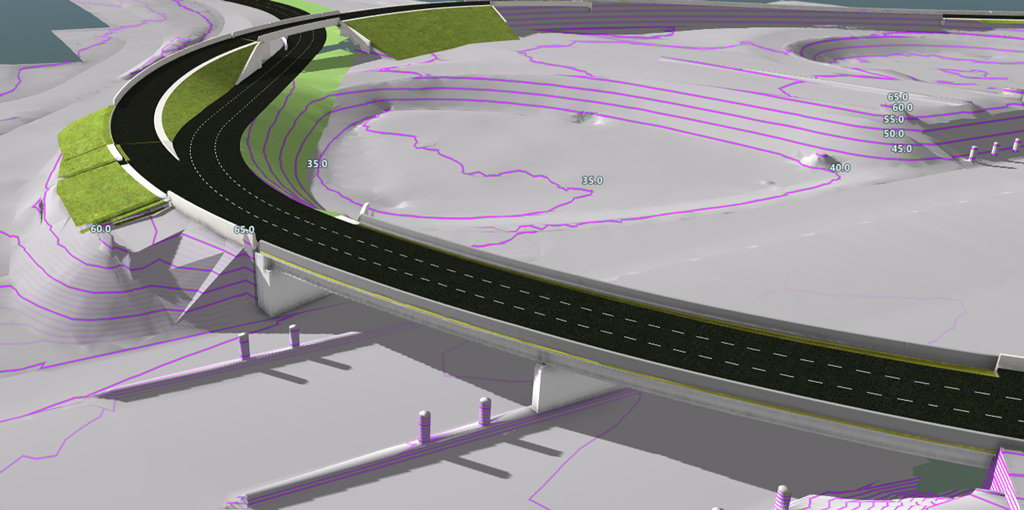
VHB is collaborating with our contractor partners Skanska, McCourt, and Aetna Bridge to use VDC to model the design-build’s 13 replacement bridges, 7.4 miles of roadway, and interchange reconfiguration for the Rhode Island Department of Transportation (RIDOT). During the year since Notice to Proceed, VHB developed a Civil3D highway design model, which the contractor team has incorporated into their model to provide 4D, 5D, and 6D capabilities by adding dimensions for schedule, cost, and materials usage. The Civil3D highway model and 2D bridge designs are being hosted on Autodesk Construction Cloud (ACC), facilitating seamless collaboration between VHB, our subconsultants, and the construction contractors. For the 3D bridge models, the VHB team is working closely with Autodesk to develop and troubleshoot workflows to efficiently produce 3D models while still delivering the 2D AutoCAD plan sets required by RIDOT.
“On such sizeable projects, VDC and seamless information sharing are critical to confirming that each bridge is constructable so the design-build team can meet our client’s schedule for the project,” attests Deputy Design Manager Sasha Weller.
Our VDC efforts began during the proposal phase of the project, when the team used modeling for a preliminary constructability review and to develop visualizations to assist the client and team in understanding the phasing, layout, and traffic movements for the proposed interchange reconfiguration.
Learn more about VHB’s design-build and alternative delivery services as well as how VHB uses digital project delivery to benefit clients and projects.

